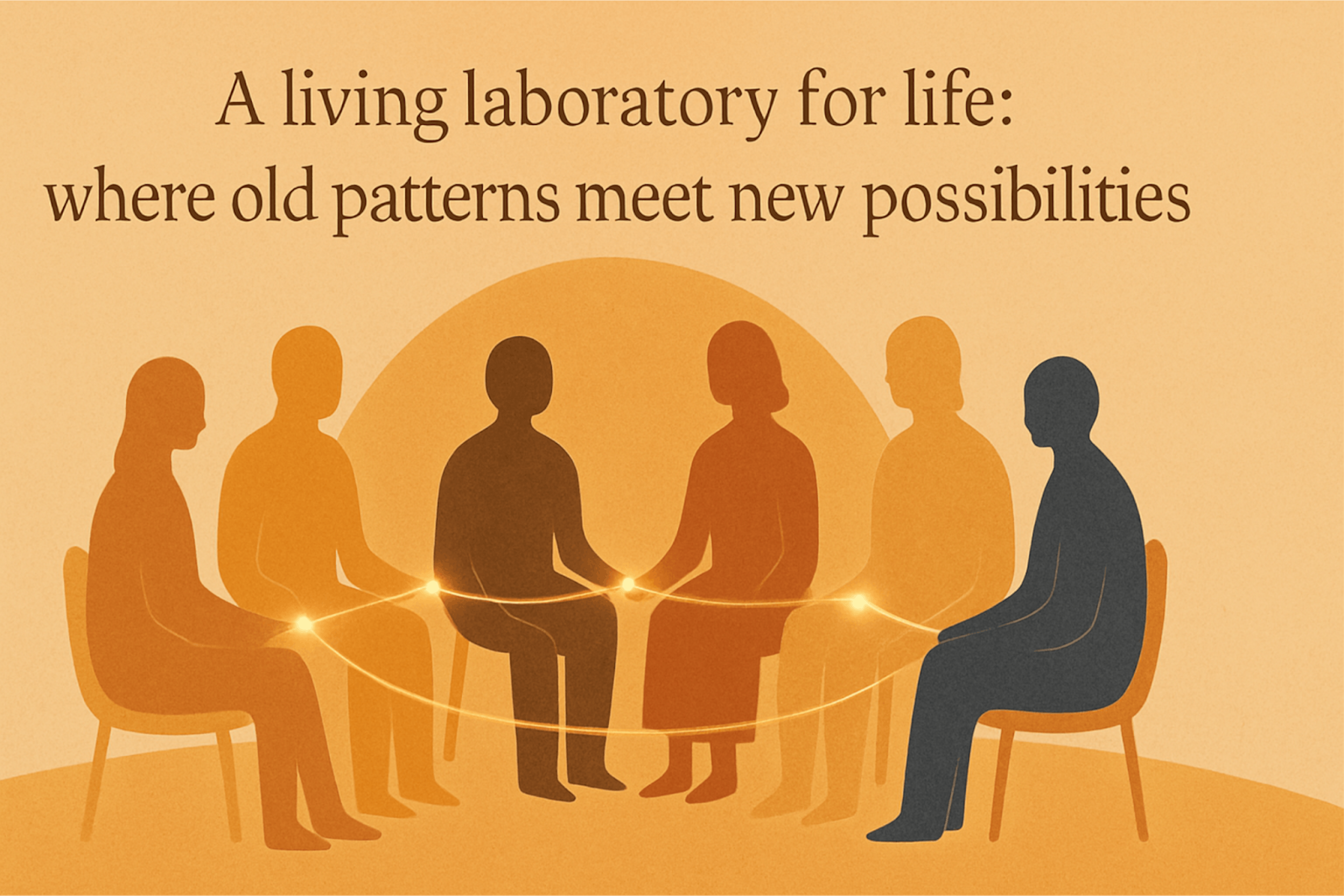Essential Differences Between Short Term and Ongoing Psychodynamic Group Therapy
Participation in an ongoing psychodynamic psychotherapy group, with diverse membership, offers a unique and powerful opportunity to deepen emotional connections in ways that individual therapy alone may not reach. It provides a living, breathing environment that mirrors the early relational structures of the primal family. The place where we first learned how to be with others, how to love, defend, adapt, or hide. This “laboratory for life” creates the fertile ground where familiar patterns reemerge—often outside of conscious awareness, only now, they can be observed, felt, and worked through in real time.
Why does this matter? Because the brain learns—and heals—through repeated, emotionally charged interpersonal experiences. In short-term therapy or brief encounters, we may scratch the surface. But it’s in the slow burn of long-term group work, where relationships have time to develop and rupture and repair anew. That’s when the real transformation begins to happen. This process does not have time to develop in a short term group. Perhaps, more importantly, knowing a group is short term and has an endpoint alters the way in which we invest ourselves and connect with others. We can leave unscathed. We don’t need these people for survival. Long term group, however, becomes the “psychic family.” Here old wounds manifest. Defenses that helped us survive in the primal family are revived. And new ways of being in the world can be tried out – with support and feedback from others walking a similar path. Leaving too soon, or brief engagement in the process, can interrupt the deeper work.

When we feel immobilized in life—stuck in patterns of self-protection, emotional distance, or confusion— ongoing group offers a place where early misattunements and the defenses we called upon to protect us, emerge in slightly different relational constellations with significant others in the current family, that is group, stirred by relationships with significant others in our family of origin. As these experiences unfold, in real time they reveal more about our early relationships than any recollection could approximate. Working through the repetitive thoughts, feelings and behaviors in connection with other members is how change occurs at the level of the nervous system. It’s also through connection with significant others that our nervous system wired in the first place.
Longevity in group work allows neurons to fire together often enough to create new relational templates—ones that, in time, can take precedence over the old ones. It is possible, in an ongoing group, to gain greater emotional flexibility, tolerance and deeper connections with others. It’s not easy, but structural change never is.

As Ormont wrote in The Group Therapy Experience, “Group… is a vehicle for people to identify and deal with their own emotional blocks and limitations. The successful group member finishes not simply with a superior capacity to relate to others, but also with more inner comfort and a far better ability to realize their own potential.”
If you find yourself hitting the same emotional walls in your relationships, an ongoing psychodynamic group might be the most important next step you take. Not because it’s comfortable, but because it’s effective. And because it offers you what most of us didn’t get enough of the first time around: a place to stay, to be seen, and to try again.
Interested in exploring long-term psychodynamic group therapy? Joanne Heith, the author, offers complimentary consultations for those considering group membership. Her robust, ongoing group meets in person on Monday evenings from 6:30–8:00pm EST in Downtown Brooklyn, New York. The fee is $50 per session, billed monthly at the end of each month.
